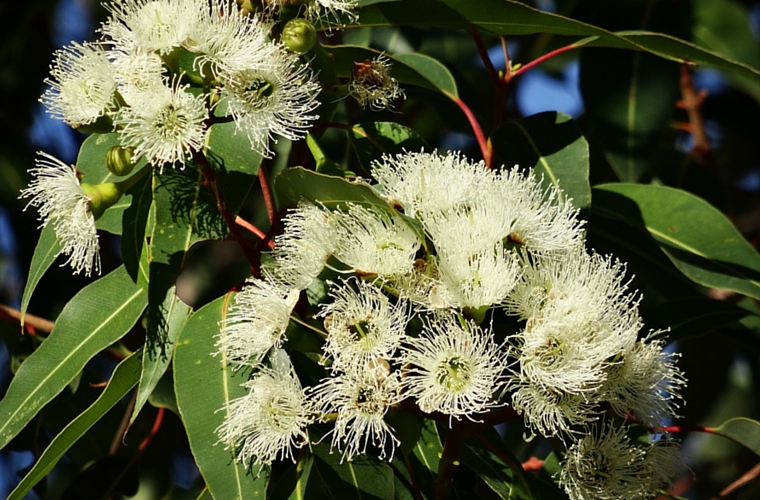Image courtesy of Pixabay/Terrific
Do you remember the last time you walked into someone’s house and smelled freshly baked oatmeal cookies? Did you immediately think of your grandmother or your favorite aunt?
Is there a cologne or perfume that connects you to a specific memory or a specific time in your life?
Your brain and olfactory system create long lasting memories based on the smells and aromas and their association with events and people.
Aromas are very powerful connectors and keys that bring up deeply hidden memories.
As I discussed previously, aromatherapy builds on the body’s ability to use aromas. It employs plant-based essential oils for a variety of healing effects. Some are more physical in nature, while others have a more profound psychological effects.
Last time we talked about medical uses for 3 essential oils I utilize quite a bit.
They include calming lavender for focus, uplifting lemongrass for mood & happiness and energizing peppermint for curing headaches/congestion.
Today I’d like to tell you about 3 additional oils. These are used for an entirely different group of symptoms.
Eucalyptus (Eucalyptus globulus)
Eucalyptus is native to southeastern Australia, but also grows in Spain, Portugal, Morocco, Brazil and even China. This oil is typically used during chest and sinus infections, flus and colds.
The plant is considered antimicrobial, anitviral and antifungal. Traditionally, it is also used for fever reduction. It’s no wonder that you see this oil in a lot of over-the-counter pharmacy cough and cold preparations.
Tea tree (Melaleuca alternifolia)
This Australian plant, similarly to Eucalyptus, is known to produce an essential oil that’s strongly antimicrobial and antiviral. It is also antifungal, antiparasitic and antiseptic in nature.
You’ll often see tea tree oil used as a part of skin care – especially for treatment of acne. This essential oil can also be used for its decongestant and even for antidepressant effects.
In addition to lavender, tea tree is the only other essential oil that’s safe for direct application to your skin. All other essential oils should be diluted in a carrier (like jojoba oil or almond oil) before they are applied to skin.
You don’t need to worry about diluting oils if they are used in a diffuser.
Rose Geranium (Pelargonium capitatum or Pelargonium graveolens)
Out of these three plants, Rose Geranium has the most floral, rose-sweet scent. When I began to learn about essential oils, I used to confuse its smell with the smell of roses.
This plant is native to South Africa and Madagascar, but can now be found in Egypt, Morocco, China and India. Rose geranium oil has very different effects – it is known as female hormonal regulator.
It’s typically used for mood swings, chronic anxiety, low stamina, sugar cravings associated with PMS, irregular periods and even varicose veins.
If you enjoy learning about essential oils as much as I do, you should check out a wonderful book that was recently published. Aromatica: A Clinical Guide to Essential Oils Therapeutics Volume 1: Principles and Profiles was written by Peter Holmes of Snow Lotus. Peter is a knowledgeable acupuncturist, herbalist and aromatherapy guru. I couldn’t wait to get my hands on this one.
Questions: Would you consider medical use of essential oils described? Are you interested in some more than other? Please share your thoughts and questions in the comments.



6 Comments
Debbie Samuels-Peretz
May 28, 2016 - 3:34 pmI’ve always been interested in essential oils, but don’t know much about them. Thanks for this post.
Lana Camiel
June 2, 2016 - 7:27 pmDebbie, it’s my pleasure! I love playing with essential oils, small amounts of substance that can have profound effects.
LivingBusyWithJanine
June 3, 2016 - 2:54 pmLana, i love posts on essential oils. Can you discuss how to use rose geranium for mood swings? i get such awful mood swings during that special time every month
Lana Camiel
June 7, 2016 - 3:00 amJanine, thank you very much! I typically use essential oils in a couple of ways. Lavender and tea tree can be applied “neat’ – that means directly to your skin. All other oils should be diluted in a carrier (e.g., jojoba, almond or another oil of your choice). When diluted (typically several drops per 1 oz of this carrier) I apply oils to my pulse points. Another way to use the oils is via diffuser – where you put oil in a little water (this is depending on diffuser). Oils can also be used instead of air fresheners (water plus essential oils). These are some of the most common ways. Rose geranium has a lovely smell. Give it a try and please let me know how you like it and whether it is helpful.
Christina Wayne, PharmD
June 8, 2016 - 1:25 pmI love playing with essential oils! I’ve mixed lavender in jojoba oil for a topical headache treatment. It has such a a soothing scent.
For those who are looking for a natural insect repellent, I’ve made my own bug spray using (mostly) peppermint, geranium and lemon essential oils mixed with witch hazel and water. I’ve recently used peppermint oil to deter ants from my kitchen and today I will be sprinkling diatomaceous earth around the exterior of the house. I’m crossing my fingers and hoping that this will deter those critters!
Lana Camiel
June 8, 2016 - 6:06 pmChristina, thank you for sharing your recipes! I spoke with a friend about a natural bug spray literally two days ago – he uses citronella and cajeput along with witch hazel. Let me know if the ants will find a new home after your experiments. Best of luck!